What to Consider When Buying Forest Land
- September 2, 2024
- 0 comment
Buying forest land can be an exciting opportunity for many reasons. Some people buy it as an investment, hoping to profit from timber sales or land appreciation. Others may want a place to enjoy nature, go hiking, or hunt. Additionally, some buyers are interested in protecting the environment and preserving wildlife habitats.
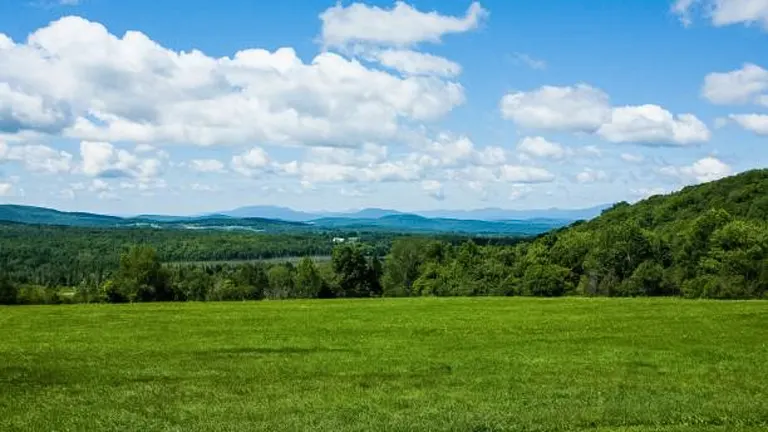
Whatever your reason, it’s important to think carefully about your choices. Before making a purchase, you should consider several important factors. These include the land’s location, its legal status, and its natural features. Understanding these aspects will help you make a smart decision that meets your needs and goals.
Purpose of Buying Forest Land
Understanding your reasons for purchasing forest land is crucial. This will guide your decision-making process and help you identify the right property. Common reasons for buying forest land include:
- Investment: Many view forest land as a long-term investment, particularly if timber harvesting is part of the plan.
- Recreation: Forest land can serve as a private retreat for activities such as hiking, hunting, or camping.
- Wildlife Habitat: Preserving natural habitats for wildlife can be a motivating factor for some buyers.
- Environmental Benefits: Forests play a critical role in carbon sequestration and biodiversity conservation.
Identifying your primary purpose will help you prioritize the features you need in the land.
Accessibility
Accessibility is an important factor to think about when buying forest land. It affects how easy it is to use the property and can influence its overall value. First, consider the road conditions leading to the land. If you plan to transport heavy loads, like timber or equipment for fire protection, the roads should be in good shape. Poor road conditions can make it difficult and costly to access the land, which could limit your ability to manage it effectively.
Next, check if there is legal access to the property. Some land can be “landlocked,” meaning there are no public roads leading to it. If this is the case, you will need to ensure that you have legal access rights. This might involve easements, which are agreements that allow you to cross someone else’s land to reach your property. Without proper access, you may find it challenging to use or enjoy the land fully.
Lastly, consider the terrain of the property. If the land has steep slopes, especially those greater than 30%, it can create challenges for activities like timber harvesting or recreational use. Steep areas may be difficult to navigate and could limit your options for building roads or trails. Before buying, assess the terrain to ensure it meets your needs. Understanding these accessibility factors will help you make a more informed decision about your forest land purchase.
Land Title and Legal Boundaries
Ensuring that the land title is clear is essential to avoid future legal disputes. Here are some steps to take:
- Title Search: Hire a title-search lawyer to confirm that the title is clean and free of liens or disputes. This search will reveal any easements, rights-of-way, or deed restrictions that could affect your use of the land.
- Boundary Verification: Obtain a property map from the current owner and verify its accuracy. Clear boundary lines help prevent disputes with neighbors and ensure you know exactly what you are purchasing.
- Legal Survey: Consider hiring a surveyor to establish precise boundaries, especially if there are uncertainties regarding the property lines.
Soil Characteristics
Conducting a soil test is very important for understanding the potential of the land you want to buy. Here are some key aspects to evaluate:
- Productivity: Check how fertile the soil is and its ability to support different types of plants, especially timber species. Fertile soil can lead to healthier trees and better growth, which is essential if you plan to harvest timber in the future.
- Erosion Risks: Determine how likely the soil is to erode. Erosion can wash away valuable topsoil and damage the land over time. Understanding the erosion risks will help you manage the land better and protect its long-term health.
- Heavy Equipment Limitations: Assess whether the soil can support heavy machinery. If you plan to use equipment for timber harvesting or road construction, it’s crucial to know if the soil is strong enough to handle the weight without becoming damaged.
- Seedling Survival: Evaluate the soil conditions that affect how well newly planted trees will survive. Factors like moisture levels, drainage, and nutrient content all play a role in the success of young trees. Good soil conditions will help ensure that your replanting efforts are fruitful.
By carefully examining these soil characteristics, you can make informed decisions about how to manage your forest land effectively and maximize its potential.
Timber and Mineral Rights
Understanding the rights associated with the land is vital for maximizing its value:
- Timber Rights: Ensure you have clear rights to manage and harvest timber. This includes understanding the current timber stock and its health.
- Mineral Rights: Investigate whether mineral rights are included in the sale. These rights can significantly impact the land’s value, especially if there are valuable minerals present.
- Deed Restrictions: Be aware of any restrictions that may limit your ability to use the land as you wish, such as conservation easements or zoning regulations.
Zoning Regulations and Taxes
When buying forest land, it is important to understand local zoning laws and how they affect your property. Zoning restrictions can limit how you can use the land, so check if there are any rules that apply to your property. This is especially important for land near cities or towns, where zoning laws may be stricter. Knowing these restrictions will help you plan how to use the land and avoid any legal issues in the future.
You should also be aware of the tax implications related to your purchase. Start by understanding the current property taxes on the land and whether it qualifies for any tax relief programs. For example, some areas offer “current use” taxation, which can lower taxes for land used for forestry or agriculture. Additionally, think about how future developments or changes in land use might affect property taxes. Being informed about these factors will help you manage your investment better and avoid unexpected costs down the line.
Market Value and Investment Potential
Assessing the market value of forest land involves considering various factors:
- Market Trends: Research current market trends for forest land in the area. Prices can fluctuate based on demand for timber, recreational land, and development.
- Non-Monetary Values: Consider the aesthetic, recreational, and ecological values of the land, which may not directly translate into monetary worth but can enhance your enjoyment and the land’s overall value.
- Investment Analysis: Evaluate the potential return on investment by considering the costs of land management, expected timber yields, and any potential income from recreational leases or other uses.
Environmental Considerations
When buying forest land, it’s important to think about how your purchase and management practices will affect the environment. One key aspect is sustainability. This means using forestry practices that not only provide economic benefits, like selling timber but also protect the health of the ecosystem. Responsible harvesting, replanting trees, and preserving natural habitats are all part of sustainable practices. By focusing on these methods, you can ensure that the forest remains healthy for future generations.
Another important factor is the ecosystem services that forests provide. These services include things like filtering water, storing carbon, and supporting a variety of plants and animals. Understanding the value of these services can help you appreciate the importance of maintaining a healthy forest.
Additionally, consider looking into conservation initiatives, such as conservation easements or partnerships with environmental organizations. These options can help you enhance the ecological value of your land while also contributing to broader conservation efforts. By taking these environmental considerations into account, you can make a positive impact with your forest land investment.
Conclusion
Investing in forest land can be a rewarding opportunity, whether for personal enjoyment, investment, or environmental conservation. However, it is essential to approach this decision with careful consideration of various factors. Understanding your purpose for purchasing the land, assessing its accessibility, evaluating soil characteristics, and familiarizing yourself with zoning regulations and tax implications are all crucial steps.
By taking the time to research and analyze these aspects, you can make informed choices that align with your goals and ensure a successful investment. In conclusion, thorough preparation and knowledge are key to navigating the complexities of buying forest land. Whether you are looking to harvest timber, create a recreational space, or preserve wildlife habitats, being well-informed will help you maximize the value of your investment and contribute positively to the environment.
Frequently Asked Questions
1. What should I consider before buying forest land?
Consider your purpose for purchasing, accessibility, soil characteristics, zoning regulations, and tax implications.
2. How can I assess the accessibility of forest land?
Check the road conditions, legal access to the property, and any terrain challenges that may affect usability.
3. Why is understanding soil characteristics important?
Soil characteristics affect the land’s productivity, erosion risks, ability to support heavy equipment, and seedling survival rates.
4. What are zoning regulations, and why do they matter?
Zoning regulations dictate how land can be used. They are important because they can restrict your intended use of the property.
5. What are the tax implications of owning forest land?
Property taxes vary based on land use. Some areas offer tax relief programs for land used for forestry or agriculture.
6. How can I ensure I have legal access to the land?
Conduct a title search and verify any easements or rights-of-way that may apply to the property.
7. What is sustainable forestry, and why is it important?
Sustainable forestry practices balance economic benefits with ecological health, ensuring the forest remains viable for future generations.
8. Can I use forest land for recreational purposes?
Yes, many people buy forest land for recreational activities like hiking, camping, and hunting, but ensure the land is suitable for these uses.
9. What should I do if the land is landlocked?
Ensure there is legal access through easements or rights-of-way to avoid difficulties in reaching your property.
10. Are there financial assistance programs for forest landowners?
Yes, various programs can help offset costs for forest restoration and management, so explore these options when considering your purchase.
We hope this detailed guide on what to consider when buying forest land has provided you with the essential knowledge needed to make an informed decision. Whether you’re looking to invest in timber production, create a recreational retreat, or preserve a piece of nature, understanding the key factors like legal requirements, environmental conditions, and long-term management is crucial to making a successful purchase.
If you have any experiences or additional insights related to purchasing or managing forest land, we invite you to share them in the comments below. Your expertise could be invaluable to others navigating the complexities of buying forest land. Feel free to share this guide with others who might find it helpful, and best of luck in your journey to owning and managing your own piece of forest land!

James Wilson
Forestry AuthorJames Wilson has over 15 years of experience in forestry economics, specializing in sustainable practices, investment opportunities, and financial management. He has contributed to notable publications like "Forestry Today" and "EcoFinance Journal" and is known for providing practical and insightful advice. With a degree in Environmental Economics, James stays updated through continuous learning and active participation in industry discussions. Outside work, he enjoys hiking and nature photography, bringing a well-rounded perspective to his professional role.

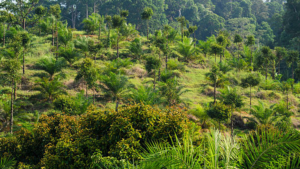
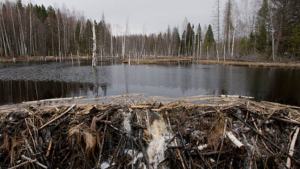

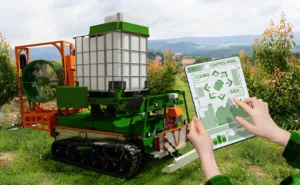


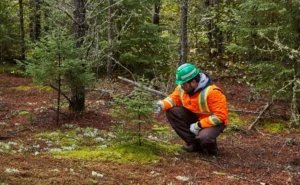
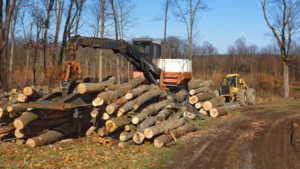




Leave your comment